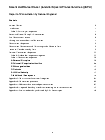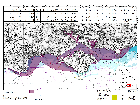Solent and Dorset Coast potential Special Protection Area: outcome
Applies to England
Download the full outcome
Detail of outcome
Minister Pow classified the Solent and Dorset Coast Special Protection Area (SPA) on 16 January 2020.
The SPA was classified as described in the departmental brief with boundary amendments, as described in appendix 4 of the consultation report.
Natural England will publish updated maps and GI data for you to download as soon as they are ready.
Detail of feedback received
All comments were taken into consideration for ministers to reach their decision.
Original consultation
Consultation description
Special Protection Areas (SPAs) are special sites designated under the EU Birds Directive to protect rare, vulnerable and migratory birds.
The consultation closed at 5pm on 17 September 2017. You can no longer comment on proposals
The original boundary proposal map missed out some areas in Portsmouth Harbour and all of Pagham Harbour. There was a mapping error in the River Avon where the boundary was not drawn to the mean high water as stated in the departmental brief. The map has been corrected and replaced.
Some stakeholders were also not made aware of the original consultation so there’s an extended opportunity for comments. All previous responses have been recorded and will be included and submitted to the Department for the Environment Food and Rural Affairs. The consultation summary document and departmental brief have been replaced.
The proposal for Solent and Dorset Coast is to create a new SPA for internationally important populations of:
- common tern
- Sandwich tern
- little tern
This area is particularly important to these birds as much of the sea around their breeding colonies is the ideal habitat for plunge diving for food.
The proposal is available as a series of separate documents (attached above). You should:
- read the consultation summary that sets out the aims of the proposal
- read the departmental brief that provides the scientific explanation behind the proposal
- use the map to locate the proposal site (this is a large file and may take some time to open)
You can obtain site boundaries as vector polygons in both ESRI ArcMap shapefile and Pitney Bowes MapInfo tab file formats from Natural England’s GIS Digital Boundary Datasets.
Use the ‘respond online’ link below to give your views.
Documents
Last updated 17 February 2020 + show all updates
-
Details of the outcome and the consultation report added.
-
Page updated with information about the progress of the consultation and why no decision has been reached yet.
-
Consultation has re-opened. All previous responses have been collected.
-
First published.



